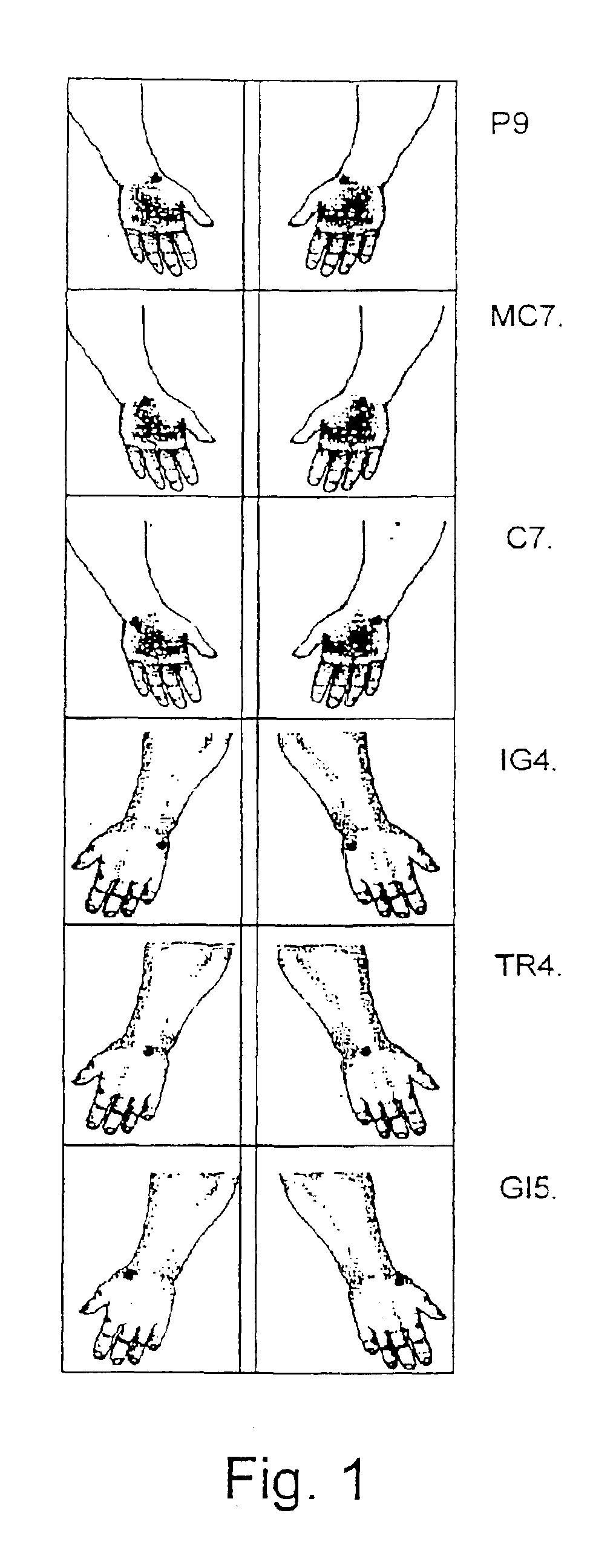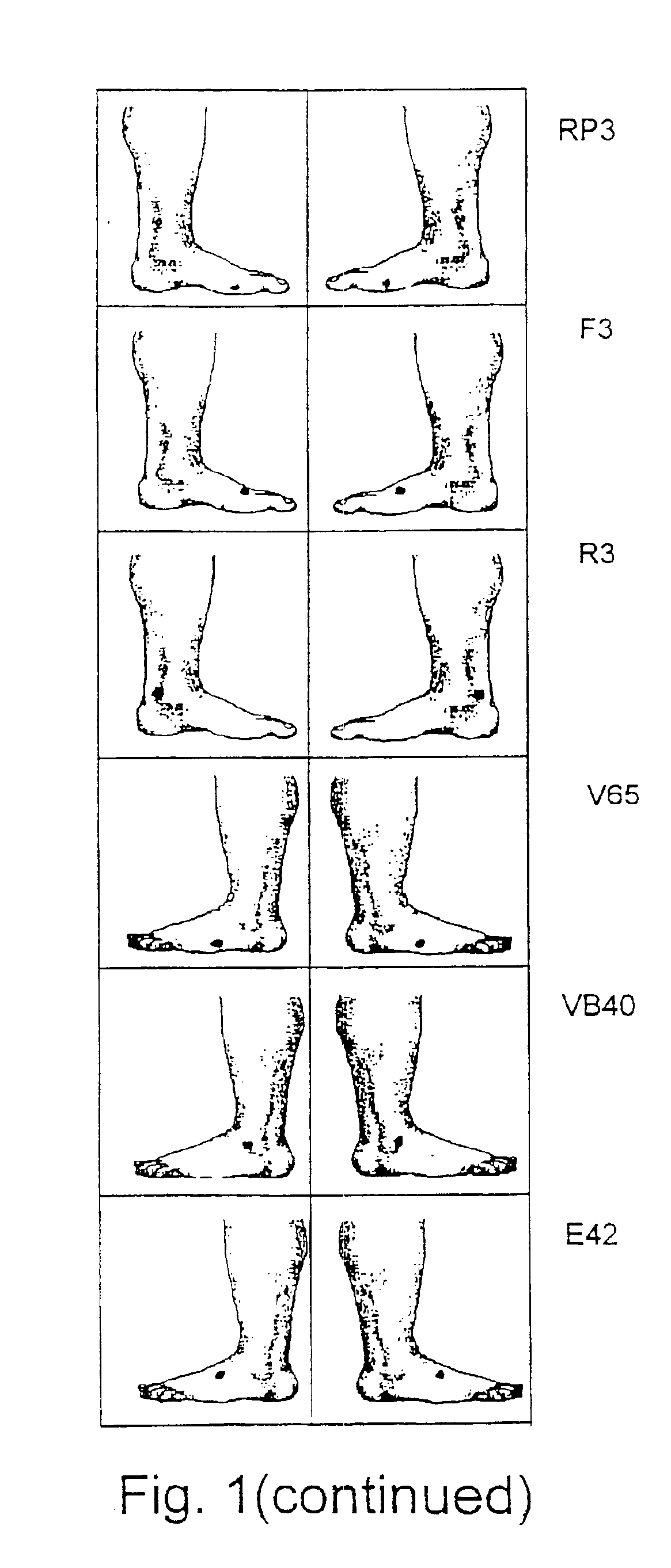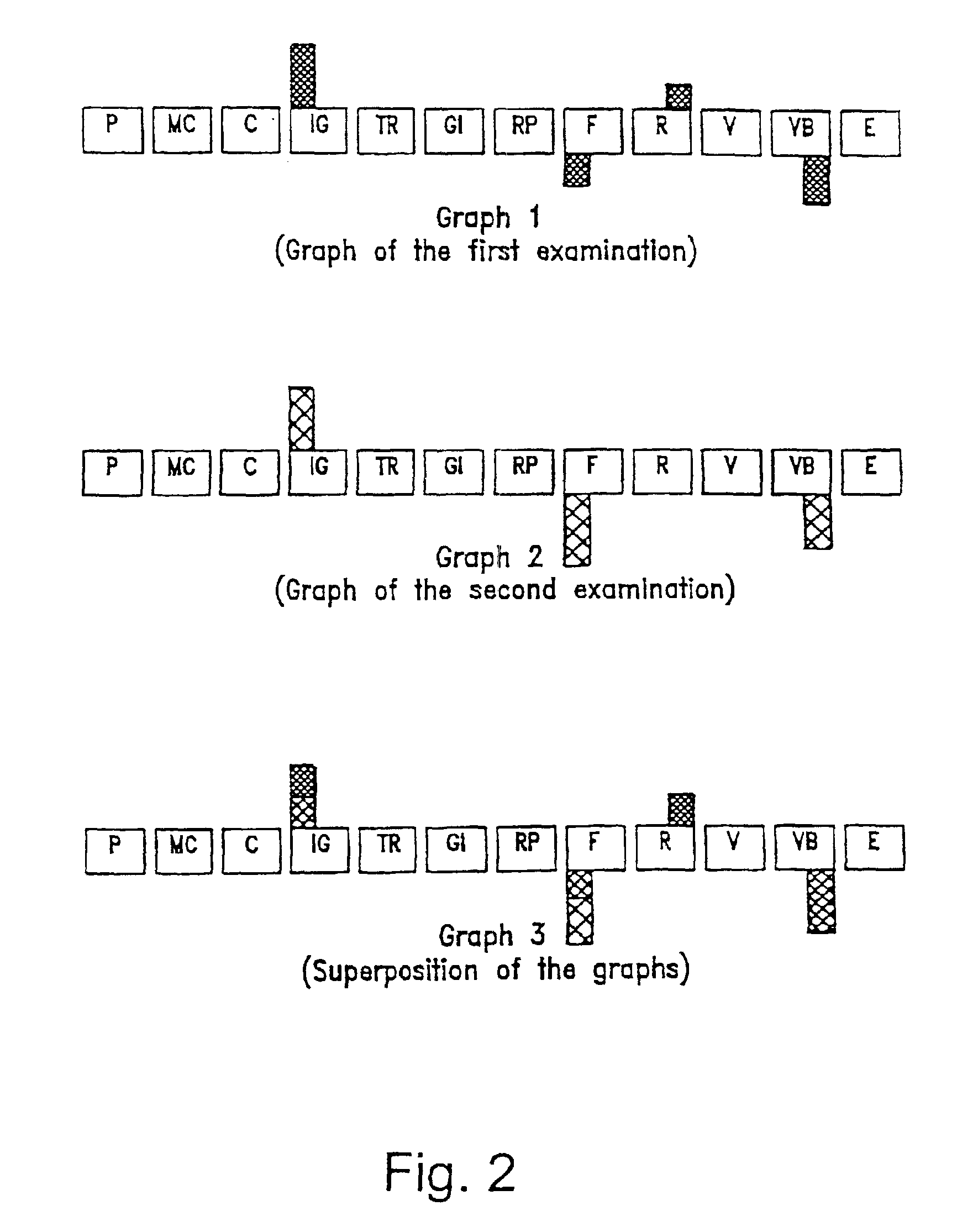Non-invasive method for disease diagnosis
a non-invasive method and disease technology, applied in the field of non-invasive methods for disease diagnosis, can solve problems such as inaccuracy of stimulation
- Summary
- Abstract
- Description
- Claims
- Application Information
AI Technical Summary
Benefits of technology
Problems solved by technology
Method used
Image
Examples
Embodiment Construction
[0027]The method of the invention, according to a preferred embodiment, is carried out by the following steps.
[0028]1. Measuring the electric resistance of the skin at the 24 BAPs in the feet and hands of the patient (all measurements being held within the 0-20 micro-Amperes range of current);
[0029]2. Applying a stimulation to the BAPs by means of an electropunctural stimulator;
[0030]3. Repeating the measurement of the electric resistance of the skin at the 24 BAPs;
[0031]4. Taking electric resistance measurements of the 10 announcement points on the abdomen;
[0032]5. Measuring the electrical resistance of the skin at the 12 sympathetic points in the paravertebral zone (bladder meridian);
[0033]6. Measuring the reference skin resistance at announcement points (the middle anterior meridian) and at sympathetic points (the middle posterior meridian), the number and location of which depend on the organ being diagnosed;
[0034]7. Mathematically processing the collected information by a prede...
PUM
 Login to View More
Login to View More Abstract
Description
Claims
Application Information
 Login to View More
Login to View More - R&D
- Intellectual Property
- Life Sciences
- Materials
- Tech Scout
- Unparalleled Data Quality
- Higher Quality Content
- 60% Fewer Hallucinations
Browse by: Latest US Patents, China's latest patents, Technical Efficacy Thesaurus, Application Domain, Technology Topic, Popular Technical Reports.
© 2025 PatSnap. All rights reserved.Legal|Privacy policy|Modern Slavery Act Transparency Statement|Sitemap|About US| Contact US: help@patsnap.com



